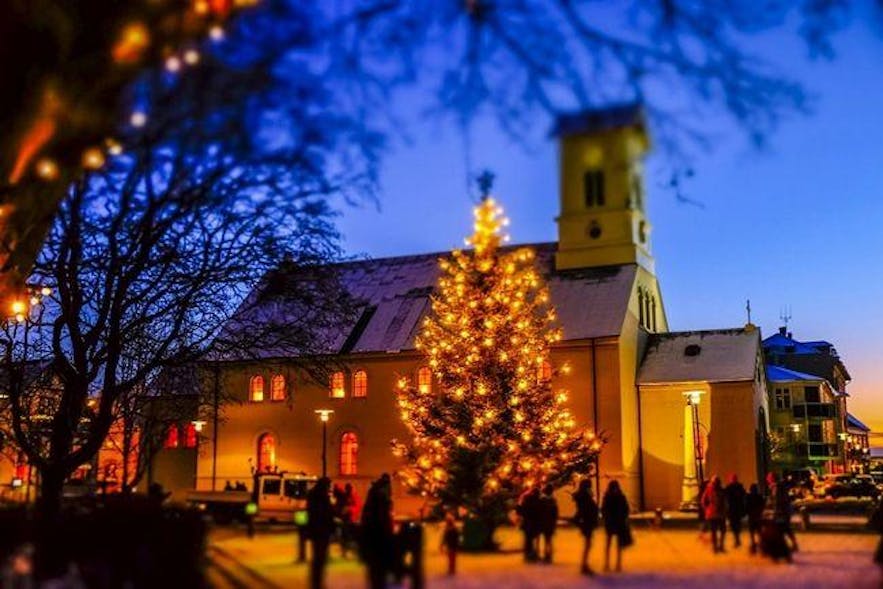
Christmas has become an integral part of American culture, but have you ever wondered when it became a national holiday in the United States? The answer lies in a fascinating blend of history, tradition, and cultural influences.
Christmas, as we know it today, has its roots in the 4th century when early Christians celebrated the Epiphany, the day the Magi visited Jesus, on January 6th. Over time, the celebration of Jesus' birth became more prominent, and Christmas, or "Christ's Mass," became a significant holiday in the Western Christian calendar.
However, when the United States declared its independence in 1776, Christmas was not widely observed as a national holiday. In fact, many early American colonists, particularly the Puritans, viewed Christmas as a "popish" or Catholic holiday and therefore shunned it.

The shift towards Christmas becoming a national holiday in the United States began during the 19th century. Several factors contributed to this transformation:
- Immigration and Cultural Exchange: The influx of European immigrants, particularly from Germany and Ireland, brought with them their Christmas traditions and customs. As they settled in America, they introduced their holiday practices, which eventually merged with existing American customs.
- Literary Influences: Charles Dickens' classic novella, "A Christmas Carol" (1843), helped to popularize Christmas in the United States. The story's themes of kindness, generosity, and redemption resonated with American readers, sparking a renewed interest in the holiday.
- Commercialization and Advertising: The mid-19th century saw the rise of mass production and advertising. Companies like Macy's and Coca-Cola capitalized on the growing interest in Christmas, creating iconic marketing campaigns that further solidified the holiday's place in American culture.
- Presidential Influence: In 1863, during the Civil War, President Abraham Lincoln declared Thanksgiving a national holiday. While not directly related to Christmas, this move set a precedent for federal recognition of special days.
- Post-WWII Prosperity: Following World War II, the United States experienced a period of unprecedented prosperity. As Americans' disposable incomes increased, so did their enthusiasm for holiday celebrations, including Christmas.
On June 28, 1870, President Ulysses S. Grant signed a bill into law that made Christmas a federal holiday in the District of Columbia. However, it wasn't until 1938 that Christmas became a national holiday in the United States.
On December 26, 1938, President Franklin D. Roosevelt signed a joint resolution of Congress declaring December 25 a national holiday. This legislation ensured that Christmas would be observed uniformly across the country, marking a significant milestone in American cultural history.
The Evolution of Christmas Traditions in the United States
Over time, Christmas traditions in the United States have evolved, influenced by various factors, including:
- German Immigration: German immigrants introduced the concept of the Christmas tree, which became a staple of American holiday celebrations.
- Dutch Influences: The Dutch tradition of "Sinterklaas" (St. Nicholas) merged with American customs, leading to the creation of Santa Claus.
- American Innovations: The United States developed its own unique Christmas traditions, such as the tradition of sending holiday greeting cards and exchanging gifts.

Today, Christmas is a beloved national holiday in the United States, celebrated by people of diverse backgrounds and faiths. As the holiday continues to evolve, it's essential to remember its rich history and the cultural influences that have shaped it into the joyous celebration we know today.
Gallery of Christmas Celebrations Around the World




What is the history of Christmas in the United States?
+Christmas has a rich history in the United States, dating back to the early 19th century. It was influenced by European immigrants, literary works, commercialization, and presidential influence.
When did Christmas become a national holiday in the United States?
+Christmas became a national holiday in the United States on December 26, 1938, when President Franklin D. Roosevelt signed a joint resolution of Congress declaring December 25 a national holiday.
What are some unique Christmas traditions in the United States?
+The United States has developed its own unique Christmas traditions, such as the tradition of sending holiday greeting cards, exchanging gifts, and decorating Christmas trees.
As you celebrate Christmas this year, remember the fascinating history and cultural influences that have shaped this beloved holiday. Whether you're surrounded by family and friends or enjoying a quiet night in, the spirit of Christmas is a time for joy, giving, and connection.











